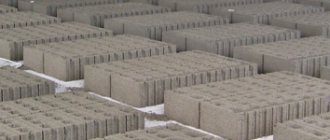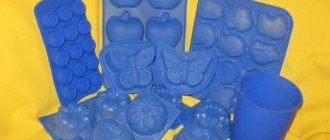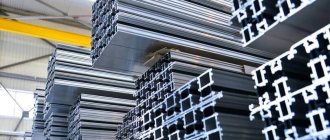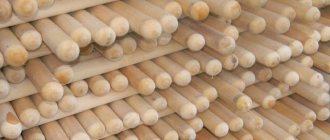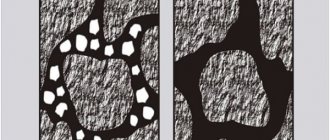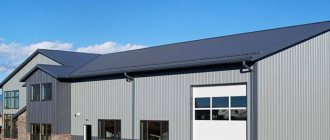Beginning businessmen often invest their capital in expensive high-tech production. At the same time, many simply do not pay attention to some of the simplest materials that are widely used in the construction industry. Meanwhile, their production and sales can bring quite high profits. Such materials can easily include chipboard (chipboard). A small chipboard production plant with established sales channels can quickly recoup all investments. The advantages are obvious - the technology is based on processing waste from wood processing enterprises, and there are enough consumers. It's time to think about how to open your own chipboard production from scratch with minimal costs.
Purpose
Chipboard is an environmentally friendly, easy-to-process, functional material, and also a high-tech alternative solution to solid wood. It is used to sheathe walls, roofs, make wall panels, create carpet or linoleum flooring, flooring, various partitions, make a wide variety of furniture, packaging, construct enclosing arrays, and decorate interior spaces. What is the production technology for chipboard? How is it made at home? Let's look at these questions later in the article.
What is chipboard made of?
The basis for the production of particle boards is a process in which sawdust is mixed with a special adhesive mass and the resulting mixture is pressed under high pressure and high temperature. The great advantage of making chipboard is the use of sawmill waste.
Pressed slabs have good strength, created by mixing the sawdust mixture with glue (resin) hardened to the state of stone. To produce environmentally friendly types of material, an adhesive mass of minimal toxicity is used.
The production of chipboards can occur on a small scale. In general, only the size of the produced slabs is limited, which should be no more than 50 x 50 centimeters.
The production of chipboard at home is the same process as on an industrial scale, but in miniature. All stages where automation should be involved are replaced by manual work.
Manufacturers and factories in Russia
The board production business is very profitable, since chipboard is widely used in everyday life. However, it involves the need to purchase expensive equipment and hire qualified personnel. There are small enterprises that produce small batches of chipboard.
The largest and most famous associations (factories) include:
- “Russian Laminate” - located in the Moscow region and has been operating since the early 90s;
- "Cherepovets FMK" - produces plywood and chipboard;
- "Flyderer" is a Novgorod enterprise, which is a subsidiary of a Polish company - a Kaluga manufacturer of a wide range of wood products, including chipboard;
- "Krasnoyarsk DOK" - offers a large selection of wood materials, using a chipboard production line to increase waste-free production.
The production of particle boards is a technologically advanced and cost-effective production line. Increased competitiveness of products occurs due to improved environmental performance and fire safety. Timely product control allows timely recording of deviations from the requirements of technological regulations and minimizing the amount of defects.
How to make chipboard at home
Let's consider the sequence of chipboard manufacturing:
- first, the sawdust mass is mixed in a medium-sized container (from 10 to 15 l);
- then the adhesive solution is added, you need to make sure that the sawdust is completely saturated;
- shaped into tiles under high pressure;
- Then, using high temperature, the workpieces are pressed; this process requires special equipment;
- The manufactured slab is cooled in air, and its edges are trimmed.
Surface lamination is carried out in the same baking press that is used in the production of uncut blanks. You can purchase a ready-made special laminate for chipboard, which can be “baked” to the surface in a certain way using an iron. Such coatings have a beneficial effect on the appearance of wood boards, but are not considered a full-fledged laminate layer.
How much money do you need to start a chipboard production business?
Detailed list of investments:
- rental and refurbishment of premises from 400 thousand rubles;
- registering an enterprise and obtaining permits about 40 thousand rubles;
- tax charges 100 – 150 thousand rubles;
- purchase of an automatic production line 8 - 10 million rubles;
- installation and commissioning of equipment from 500 thousand rubles;
- purchase of raw materials from 4 million rubles;
- employee salary is about 150 thousand rubles;
- advertising 40 – 50 thousand rubles;
- other expenses – 50 thousand rubles.
We can conclude that to open such an enterprise you need 14 - 15 million rubles.
Equipment list
The full list of equipment for chipboard production includes:
- Mixers, which are needed in order to obtain a homogeneous mixture made from sawdust and an adhesive (usually a resin with special impurities to create a solid structure).
- Forming devices are necessary to impart viscosity and shape to the mixture.
- High temperature pressing equipment and machines.
- Coolers are used to make hot chipboards cool faster.
- Edge trimming devices that remove the edge from slabs.
- Grinding machines make the formed surface smooth.
The functionality of all equipment in large-scale production is ensured automatically. The quality of work is controlled by maintaining the mechanism settings at the required level.
All of the wood-based panel manufacturing equipment listed earlier is suitable for the job, assuming ready-made raw materials are available.
If you plan to use your own raw material in the manufacture of chipboards, then the equipment must be supplemented with auxiliary equipment, such as cutting machines, chopping mechanisms, mills and planing machines.
Among other things, additional equipment that will improve the manufacturability of wood-based panels includes conveyors, tables equipped with lifting mechanisms, ventilation systems necessary to remove sanding dust, drying chambers and conveyors. Let's look at how chipboard is made.
What equipment is required for chipboard production?
All this technology can be implemented using such a set of machines and installations. Most often they are supplied in one production line. If you choose the right machines for productivity, then you can assemble them separately.
| Hammer crusher DMR-600-10-55 | Productivity of the model is 10-30 cubic meters. m. The cutting element consists of six discs mounted on a shaft. They are closed by the body. The crusher has a number of sieves for sifting raw materials. |
| Vibrating screens for sorting | Used additionally for better selection of sawdust. |
| Drying complex | Drum type dryer running on gas or fuel oil. The diameter of the working drum is 2.2 m, length is 10 m. Usually the platform has a slight slope towards the side from which the raw materials come. |
| Continuous mixer (for example DSM-7) | Resinization occurs in it. Raw materials and binders are supplied to the tank. It is added to the mixture through nozzles. The screw shaft with blades makes constant movements and mixes the mixture until smooth. |
| Presser | This equipment is capable of forming a workpiece of the required thickness and width in one pass. The uniform density and thickness of the product depends on the operation of this equipment. |
| Heat press | Here the workpiece is hot pressed at a temperature of 180 degrees. The pressure exerted on the plate is 2.5-3.5 MPa. I apply a press to 1 mm for at least 0.35 minutes. For the production of laminated chipboards, extrusion-type presses with internal channels are used. This equipment can be single or multi-storey. The latter allows pressing of up to 22 pieces of products simultaneously. The height of such equipment reaches 8 meters, so this must be taken into account when choosing a room. |
| Cooling chambers | They are a large rotating drum with special cells. In an hour, such equipment can cool about 200 workpieces to a temperature of 50 degrees. |
| Sawing machines | These include equipment for grinding ends and a cross saw. |
Manufacturing sequence
The manufacturing steps are as follows:
- first you need to find raw materials, sawdust and wood chips in the warehouse;
- then the raw materials are prepared for work by grinding;
- the materials are dried to obtain a suitable consistency for gluing;
- chips are sifted using automated sieves and sorted depending on size;
- larger and smaller chips are mixed with each other;
- a resin adhesive is added;
- the viscous mixture is sent to a molding machine, which forms wood boards;
- Chipboard is pressed under high pressure and high temperature;
- the plates are cooled;
- the edge is trimmed, and the resulting workpieces are sawn into pieces of the required size.
So, we looked at how chipboard is made. Sanding this material is necessary as the final step in the manufacturing process. It is the level and quality of grinding that directly determines what grade the finished product will be classified as. First grade chipboards should not have scratches, stains, insufficient sanding, or waves on the surface.
The necessary parameters of wood boards are controlled both during production and after the chipboards are ready. The manufactured sheets are stored in blocks, which are laid on special wooden pallets - pallets.
My services and literature
I constantly publish new and relevant literature on woodworking. It provides simply killer information about modern technologies and methods of working in slab production. The book is based on personal experience and the work experience of German specialists. More details about the book in the “BOOKS” section.
From time to time I conduct webinars on woodworking, where the most interesting and current issues of woodworking are discussed. Stay tuned for new articles and find out when the next webinar will be.
You can also order an individual consultation on woodworking from me. I, like no one, know what mistakes equipment manufacturers make, since I have experience. For example, they are building a plant for 200 thousand slabs per year and do not take into account the diameter of the incoming raw materials, but I know that this must be taken into account! More details about consultations in the “SERVICES” section.
Oh, and I also want to say about another book, it talks about the technology of making 3D particle boards. In Russia, no one produces such slabs yet, so you can be the first! There are no analogues of the book in Russia and the CIS countries. More details about it in the “MY BOOKS” section.
Milling process
Creating shaped surfaces from the inside and processing corners from the outside is done during the milling process. A cutter is a cutter equipped with teeth; it usually has any regular shape (for example, a cone or trapezoid). Particle boards require processing along the entire thickness, which differs from processing harder materials. This is necessary to prevent accidental chips from appearing.
Before you start milling, you need to prepare. To do this, you need to cut out the contours of the planned figures in advance using a jigsaw or saw. They are usually processed manually or using a stationary milling cutter. In this way, cylindrical and oval-shaped holes of any size are obtained, which ensures an aesthetically pleasing appearance of the finished slab.
Workshop requirements
Considering that the production line is very bulky and multi-component, it is not advisable to look for a space less than 500 m2. In addition to the large area, there are a number of conditions that the workshop must meet:
- distance from residential areas;
- equipping with utilities, including heating, ventilation, power supply, cold and hot water supply and sewerage systems;
- full compliance with sanitary and hygienic standards and fire safety requirements;
- separate room for each production process;
- additional space for warehouses for raw materials and finished products.
What is the process of chipboard lamination?
Considering how chipboard is made, let's take a closer look at the lamination process. Any furniture, including cabinets, kitchen units of any class, is made from wood boards, the surface of which has undergone a special stage of processing and has been laminated with special materials necessary to protect the product, as well as create a more aesthetic appearance. These products are called laminated chipboard or expanded laminated chipboard.
To laminate a product, it is necessary to apply a stable coating to its surface, which improves the appearance; no additional processing is required.
The main stages of the wood board lamination process are as follows:
- First, the highest quality material is selected, the most durable and dense products that have low humidity.
- The chipboard is coated with a primer to ensure the best adhesion of the laminate;
- Now several layers of paper are applied (no more than three), which are impregnated with a resin mixture. With the help of paper, the product will be more durable, and painting the outer part creates an aesthetically attractive appearance of the slab. The process of creating layers is accompanied by compression at high temperatures.
- Next, the product is quickly cooled, sometimes with the help of watering.
The surface of the particle board must be carefully polished before it is laminated. If even small roughness and uneven places remain, this can lead to deterioration of the laminate layer and, accordingly, the product will be rejected. The process of laminating with your own hands at home is very difficult to produce with high quality, so often already processed, industrially made laminated chipboards are purchased for subsequent use.
Storage Features
Storage areas for chipboards should be dry, warm, with good ventilation and humidity not exceeding 65%. This is due to the fact that when exposed to moisture, the sheets become deformed, lose their density and appearance. Direct sunlight and heating pipes in close proximity to the products also cause loss of shape.
Another condition that ensures the preservation of appearance and physical and mechanical characteristics is the location of the product in a strictly horizontal plane.

